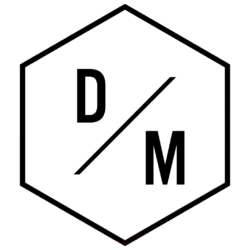Snyk, the developer-first cybersecurity firm, has shifted from an imminent IPO trajectory to exploring acquisition proposals as market conditions and execution timelines evolve. The company’s strategic moves — including targeted acquisitions, product integration, and tightening of financial metrics — have drawn interest from strategic buyers and private equity alike. This overview highlights the dynamics of those approaches, the comparative landscape with peers, the operational and technological signals that shape valuation, and the implications for customers, partners and investors.
Companies that depend on developer workflows and cloud-native infrastructure monitor Snyk’s decisions closely. The ecosystem reaction touches large cybersecurity vendors, cloud providers, and niche AI-security startups. The following sections dissect these developments through operational examples, market comparisons and a practical lens aimed at engineering and security leadership.
Snyk Navigates Acquisition Talks Amid Delayed IPO Plans
The decision to delay an IPO while entertaining acquisition offers reflects a pragmatic recalibration of timing and objectives. Snyk’s management is weighing liquidity and market exposure against strategic continuity, product roadmap autonomy and favorable valuations. Moving from a prospectus draft in early 2024 to acquisition conversations by 2025 indicates both interest from buyers and shifts in public-market appetite for cybersecurity IPOs.
From a technical and commercial standpoint, acquisition interest often centers on three value pools: customer base, developer-centric security tooling, and AI/agentic security capabilities. Snyk’s integration of research teams and acquisitions targeting AI security increases its strategic appeal to larger platforms seeking immediate expertise. Comparable acquisition plays in the market — such as platform consolidations and IAM roll-ups — provide a playbook that informs how offers may be structured.
Snyk acquisition drivers and buyer motivations
Buyers evaluate Snyk for recurring revenue, product differentiation and developer adoption. Strategic acquirers like cloud and security platform vendors aim to embed developer security capabilities into broader stacks. Private equity buyers focus on margin expansion and bolt-on acquisitions to consolidate market share.
- Recurring ARR and growth trajectory
- Developer-first adoption and community network effects
- AI and vulnerability research capabilities
- Channel partnerships and enterprise contracts
| Acquisition Factor | Why it matters | Typical buyer type |
|---|---|---|
| Annual Recurring Revenue (ARR) | Predictable cash flow and valuation multiple | PE firms, large strategics |
| Developer adoption | Low churn and product-led growth | Cloud providers, platform vendors |
| AI & research IP | Differentiator in agent security and automation | Security vendors, tech conglomerates |
Examples from the market illustrate possible scenarios. When a large cloud provider buys a developer security company, integration often accelerates adoption but can constrain neutrality, potentially upsetting customers who require multi-cloud choice. Conversely, private equity acquisition can inject capital for acquisitions while pushing for cost discipline that impacts R&D cadence.
Operationally, Snyk must prepare diligence artifacts typical in transactions: audited financials, customer cohort analysis, product roadmaps, third-party risk assessments and IP ownership documentation. Security posture and supply-chain vulnerabilities are especially scrutinized because acquiring firms inherit liabilities. Documentation that maps Snyk’s integrations with Okta, Palo Alto Networks, and other vendors reduces friction in M&A due diligence.
- Prepare financial tables showing ARR, growth and churn
- Document integrations with identity and cloud security vendors
- Codify IP ownership and open-source policies
- Create a prioritized roadmap tied to revenue impact
| Diligence Area | Typical Request |
|---|---|
| Financials | 3–5 years of audited results, ARR breakdown |
| Security | Pen tests, SBOM, dependency disclosures |
| Customers | Top 50 contracts and retention metrics |
The acquisition route offers immediate liquidity for shareholders and potentially a faster path to scale Snyk’s platform via distribution channels. An IPO, by contrast, provides public-market credibility and ongoing capital access but exposes the company to quarterly scrutiny. Each path has trade-offs; both require Snyk to balance product independence with the strategic needs of likely acquirers. Key insight: aligning business metrics with buyer expectations is central to maximizing outcomes in either path.
Snyk Strategic Positioning vs. Cybersecurity Peers in 2025
Snyk’s market position in 2025 is best understood against peers such as CrowdStrike, Palo Alto Networks, SentinelOne, CyberArk, Tenable, Rapid7, Darktrace, Okta and Check Point. Each vendor brings distinct strengths: endpoint telemetry, network-level prevention, identity protection, vulnerability scanning and AI-driven monitoring. Snyk’s developer-first model targets a unique part of the attack surface — code, dependencies and CI/CD pipelines — creating complementary rather than directly competing overlaps.
Comparative benchmarking clarifies total addressable market and partnership opportunities. For instance, CrowdStrike and SentinelOne excel at endpoint detection, while Palo Alto Networks and Check Point provide network and firewall security. Identity specialists like Okta and privileged access management players like CyberArk control distinct trust layers. Snyk slots into application security and developer workflows, enabling product integration plays that augment these vendors’ stacks.
Market map and interoperability
Interoperability is a pivotal differentiator. Customers increasingly demand integrated stacks where Snyk’s findings feed into SIEMs, IAM systems and endpoint orchestration. Partnerships or acquisitions by larger vendors could accelerate such integrations but require attention to neutrality and cross-product data flows.
- Complementary strengths create partnership pathways
- Overlapping capabilities can trigger consolidation
- Open APIs and export formats facilitate SIEM/EDR integration
- Vendor-neutral tooling remains attractive to multi-vendor shops
| Vendor | Primary Strength | How Snyk complements |
|---|---|---|
| CrowdStrike | Endpoint detection & response | Ingest Snyk findings for context in incident response |
| Palo Alto Networks | Network security & cloud-native protections | Combine with Snyk for application-aware firewalling |
| Okta | Identity and access management | Use identity signals to prioritize Snyk remediation |
Case study: a fintech firm, AtlasPay, adopted Snyk to shift left on vulnerabilities in payment microservices. AtlasPay also used Okta for identity and Palo Alto Networks for cloud security. The combined telemetry reduced mean time to remediate for high-severity issues by 40%. The integration required mapping Snyk’s CVE and dependency data into the company’s SOAR workflows and aligning remediation playbooks across teams.
- AtlasPay mapped Snyk findings to incident response runbooks
- Okta supplied identity context to prioritize fixes for high-risk users
- Palo Alto’s cloud controls enforced runtime rules post-remediation
| Metric | Before (AtlasPay) | After (with Snyk) |
|---|---|---|
| MTTR for critical vulns | 72 hours | 43 hours |
| False positives in alerts | High | Reduced |
Strategically, Snyk must defend its developer-first moat while enabling vendor integrations. Partnerships that enhance value — such as mapping to Tenable’s asset discovery or Rapid7’s vulnerability management — reduce friction for enterprise adoption. Snyk’s acquisition of AI-focused research assets aligns it with broader trends where AI enables better detection and remediation prioritization across stacks. Insight: Snyk’s differentiation is strongest when positioned as the developer gateway into consolidated enterprise security workflows.
Snyk’s Financial Metrics, M&A Interest and Market Signals
Financial performance and operational metrics explain much of the rationale behind acquisition interest. Snyk reported rapid revenue growth in prior years, with ARR increases and gross retention levels that underline product-market fit. Cost control measures, including workforce adjustments and improved unit economics, are common precursors to either IPOs or sales processes because they make a company more attractive to buyers and to the public markets.
Recent publicly available signals include revenue growth rates, ARR milestones and operating loss reductions. These metrics, combined with a customer base that spans SMBs to large enterprises, create a valuation narrative. Observers noted similar patterns in other cybersecurity firms that either accelerated M&A activity or pursued public listings. Market comparables include acquisitions and IPOs where strategic buyers paid premiums for growth plus technical differentiation.
Key financial indicators and valuation considerations
Buyers and public investors focus on predictable revenue, gross margins, customer concentration, and R&D runway. Snyk’s path to better margins includes higher enterprise contract penetration and upsell of AI-powered modules. The company’s acquisition track record — acquiring research firms to bolster AI capabilities — both strengthens the product and increases acquisition appeal.
- ARR growth and renewal rates
- Gross and net retention metrics
- R&D spend vs. product delivery outcomes
- Customer concentration risk
| Metric | Importance | Target for buyers |
|---|---|---|
| ARR | Revenue predictability | Growing 30%+ year-over-year |
| Gross retention | Customer stickiness | Above 90% |
| Net retention | Upsell capability | Above 110% |
Contextual market signals matter. In 2025, cybersecurity IPOs are feasible but often priced with caution; public market investors demand clear paths to profitability. Snyk’s decision to weigh acquisition offers suggests a view that strategic buyers may place higher premiums on its assets than the public markets in the near term. Similar patterns were visible in other sectors where AI-enabled vendors attracted strategic interest from larger incumbents seeking specialized capabilities.
- Strategic buyers may value integration synergies
- Public markets value consistent path to profitability
- PE buyers may focus on margin expansion
- M&A timelines compress when interested parties seek rapid scale
| Scenario | Likely Outcome |
|---|---|
| Strategic acquisition | Faster distribution but potential product-brand changes |
| Private equity buyout | Margin optimization and bolt-on acquisitions |
| IPO | Public capital, scrutiny and independent product roadmap |
Relevant market references show that other cybersecurity companies navigated similar choices. Readers can review case studies where platform consolidations influenced product roadmaps and customer perceptions, such as recent moves by large consultancies and platform vendors expanding into identity and developer security domains. Additional background on related transactions and industry commentary is available in market analyses and acquisition reports. Insight: Snyk’s financial profile must align with the chosen path — acquisition or IPO — to capture the maximum strategic value for stakeholders.
Snyk Technology Integration, AI Security and Developer-Centric Approach
Snyk’s core value resides in shifting security left into development cycles: code, open-source dependencies, container images and IaC templates. Building on this, recent investments in AI research and acquisitions that focus on agentic and generative AI security raise the platform’s capabilities to detect novel threats, prioritize fixes intelligently and automate remediation workflows. These technical moves matter to customers who operate high-velocity DevOps pipelines.
AI-powered security features include predictive vulnerability prioritization, automated patch suggestions and risk scoring that considers business context. Integration with CI/CD tools, source control systems and container registries reduces friction for engineering teams. Snyk’s approach complements the defensive technologies of other vendors by providing signal enrichment and developer remediation pathways that can plug into endpoint and network defenders.
Technical components and practical integrations
Successful integration requires standardized APIs, event-driven hooks and secure token handling. Snyk’s connectors to popular platforms and identity providers enable automated workflows that preserve traceability. For instance, integrating Snyk with Okta enables policy-based gating of risky deployments, while outputs to SIEMs augment detections for vendors like CrowdStrike and Darktrace.
- Automated vulnerability triage within pull requests
- Runtime enforcement with cloud-native security platforms
- AI-assisted remediation suggestions contextualized by asset criticality
- Audit trails to satisfy compliance and risk teams
| Component | Function | Integration target |
|---|---|---|
| Dependency scanning | Detect vulnerable open-source libraries | CI/CD, artifact registries |
| Container image scanning | Identify runtime risks | Cloud registries, runtime defenders |
| AI prioritization | Reduce noise, focus fixes | Ticketing, orchestration tools |
Customer narratives illustrate the value. An enterprise using Snyk alongside Rapid7 for external scanning and Tenable for asset discovery established a chain-of-evidence process: Snyk finds dependency risks during build, Tenable maps the asset and Rapid7 validates external exposure. The combined pipeline shortened time-to-fix and improved executive reporting. Technical challenges included mapping asset identifiers across systems and reconciling risk scores from different tools.
- Map identifiers between Snyk and asset management systems
- Normalize risk scores to a company-wide scale
- Automate ticket creation with contextual remediation steps
| Integration Challenge | Mitigation Strategy |
|---|---|
| Cross-tool identifier mismatch | Use canonical asset registry and reconciliation layer |
| Alert fatigue | AI prioritization and suppression rules |
Industry directions show that integrating AI into security tooling is accelerating. Vendors and customers are aligning on shared frameworks to manage third-party AI risks and to ensure model integrity. Snyk’s investment in AI security research positions it to lead in securing agentic applications and code-generating models, a capability large strategics may prize. Insight: robust, standardized integrations and AI-aware controls will determine whether Snyk’s technology becomes an indispensable layer in modern security stacks.
Our opinion
The market options facing Snyk — a public listing or a sale to a strategic acquirer — each present credible pathways to scale the company’s developer-first mission. Acquisition offers can accelerate distribution and integrate Snyk’s capabilities into larger security and cloud platforms. An IPO would provide independence and broaden capital access, but requires continued progress on profitability and predictable growth. Both routes emphasize the need for clear operational metrics and product continuity.
For customers and partners, the immediate focus should remain on securing software supply chains and integrating developer-centric signals into broader security operations. Vendors such as CrowdStrike, Palo Alto Networks, SentinelOne, CyberArk, Tenable, Rapid7, Darktrace, Okta and Check Point will likely seek stronger developer security primitives, which makes Snyk a strategically interesting asset in the ecosystem.
- Prepare for change: customers should evaluate contractual protections
- Focus on integration: maintain vendor-neutral architectures
- Monitor signal flows: ensure Snyk telemetry is consumable by SIEM/EDR
- Assess roadmap continuity under either IPO or acquisition path
| Stakeholder | Recommended Action |
|---|---|
| Enterprises | Review supplier risk and integration plans |
| Partners | Negotiate interoperability guarantees |
| Investors | Compare strategic vs. public upside |
Practical next steps include reinforcing integration patterns with identity providers like Okta, ensuring compatibility with endpoint and network defenders such as CrowdStrike and Palo Alto Networks, and preserving data portability to avoid vendor lock-in. Customers can also consult recent industry analyses and case studies to better understand acquisition dynamics and valuation drivers.
- Validate SLAs and change-of-control clauses
- Test data export and vendor-neutral integrations
- Map Snyk signal consumption into incident response playbooks
| Outcome | Implication |
|---|---|
| Snyk acquired by strategic | Faster integration with buyer’s stack, potential neutrality concerns |
| Snyk goes public | Independent roadmap with public funding but investor scrutiny |
For teams designing secure development lifecycles, the strategic recommendations are clear: maintain modular architectures, insist on open APIs, and prioritize vendor-agnostic telemetry pipelines so changes in vendor ownership do not disrupt security operations. This pragmatic posture ensures resilience regardless of Snyk’s corporate trajectory. Final insight: Snyk’s technological strengths and market footprint make it a central actor in modern cybersecurity; stakeholders should prepare operationally to leverage its capabilities while safeguarding continuity.


